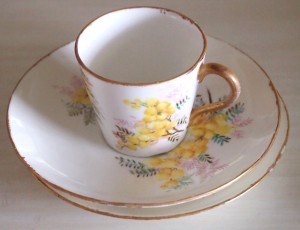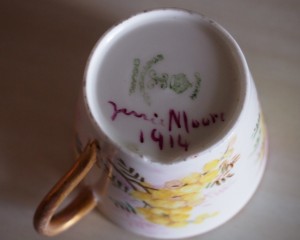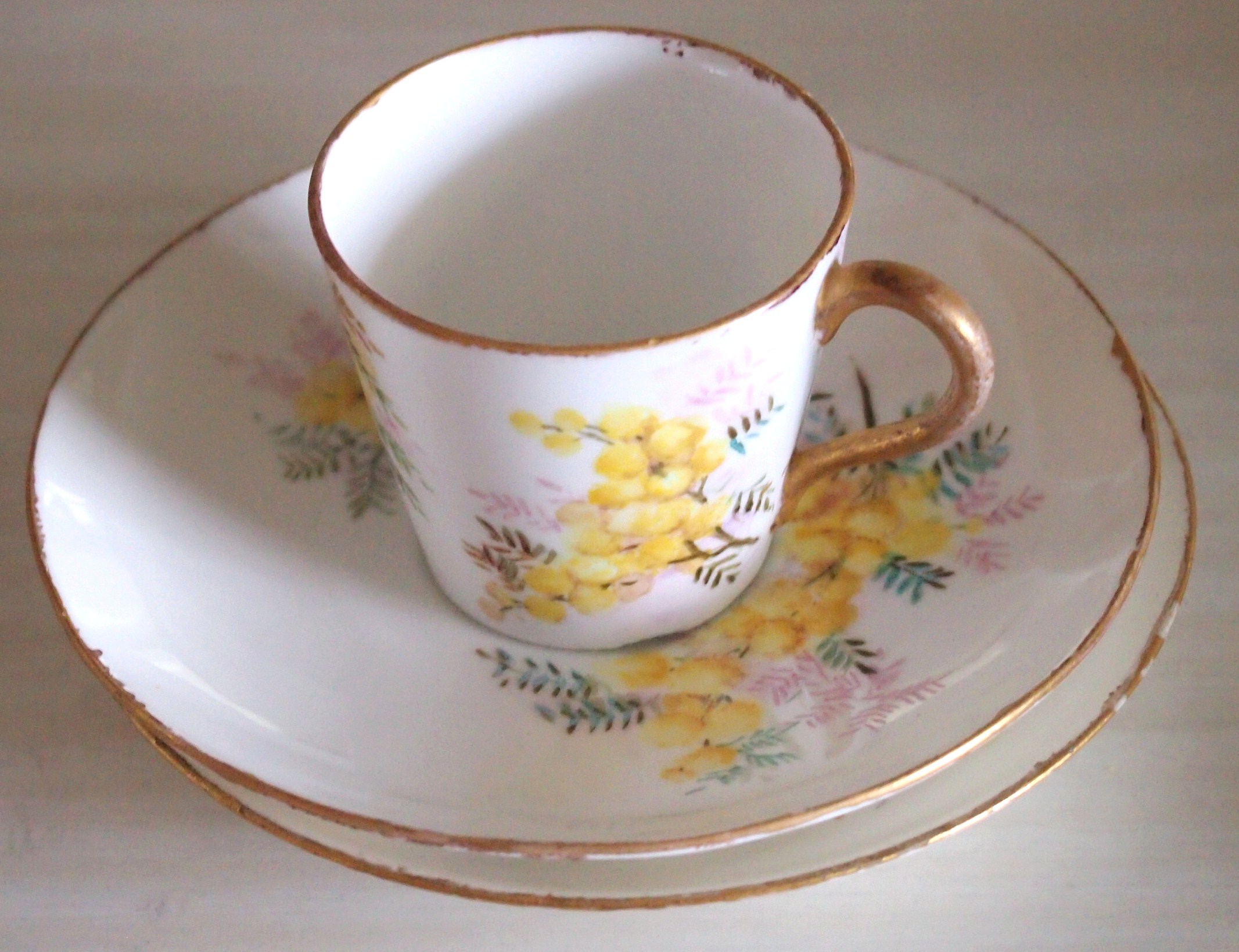In the second in our series on decluttering your home, Kirsten McCulloch visits her grandfather’s house and is challenged to examine the motivations behind her cluttering ways.
In the break between Christmas and New Year I visited my Grandfather’s somewhat empty house on the New South Wales central coast. Empty, in the sense that no-one lives there, my grandfather – at the age of 94 – having moved into a nursing home a few months ago. But not empty in that it is still full of Stuff.
Not as full as it could be. After my grandmother died 14 years ago, my grandfather, Charles, cleared out a lot of stuff. After some sixty years of devoted marriage, he missed his wife dreadfully, but that didn’t make him sentimental about keeping either the house or garden they way she had. He got rid of quite a lot of bric-a-brac, as well as some linen and most of her jewellery, for which we can now be grateful. Not enough, however.
My sister visited some time ago, when Charles was first hospitalised after a fall, and at my father’s behest she photographed much of the ‘stuff’ in the house, to give us all a chance to ask for anything we wanted. I would have loved to have taken some of the beautiful restored antique furniture, but we have no place to put it and besides I wouldn’t want the stress of trying to keep it in good condition, with three boisterous children and their assorted friends in the house! Luckily my brother and his family are about to move back from overseas, so a whole houseful of furniture is exactly what they need.
Once I arrived at my grandfather’s house, however, my resolve to refrain from increasing our own clutter was sorely tested. I’m a sucker for old crockery and Charles has a lot of it.

There’s a set of small bone china tea cups and saucers that no-one wants, which are just the right size for my girls, who like to drink tiny cups of tea (too small for my nine year old, who prefers a good mug). ‘Jenni Moore, 1914’ is painted on the bottom of each cup and each saucer. She didn’t make them – they also have the imprint of the English porcelain company that did (Crown) and two of the saucers, which have the same pattern but are slightly bigger, say they are Wedgewood. Presumably two saucers got broken and these were replacements. They too, however, have ‘Jenni Moore’ on the bottom, though one is in a different colour paint, and one doesn’t have the year.
Who was Jenni Moore? Did she buy, or was she given this set in 1914? Or did she gift them? How did it come into my grandparents possession? They were both born a few years later, but perhaps the set was handed down to them? Or did they just buy it somewhere?
Who cares really? We don’t know the story and we don’t need the cups. And if I took them, I would feel obliged to try to prevent breakages – after all, they are nearly 100 years old, at least – which means they wouldn’t get used anyway. So why not just give them to St Vinnies?
Well, I didn’t take them, but it was hard. If I’d known who Jenni was, and if her story had been meaningful to me, I might very well have taken them, adding to the clutter I am trying to reduce. So it’s probably just as well I don’t know.
In Simplify, Joshua Becker says:
Clutter is anything you don’t need or love.
Clutter is anything that is disorganised.
Clutter is too much stuff in too small a space.
I have to keep coming back to these three guiding principles and remind myself that if I neither need nor love it then – I don’t need it. Really. But I do love that he gives us that bit of wiggle room – if we love it, it’s okay that we don’t need it. Just as long as it is not disorganised, or trying to fit in with all that other stuff you don’t have room for.
My attachment to stuff – to keeping and even accumulating stuff that I neither need nor love – is born of two completely separate mothers. Firstly, I have a sentimental streak. Combine this with a strong interest in family history and a belief that knowing where we’ve come from is essential to knowing who we are, and maybe you can start to see why I was tempted by those cups. Though perhaps you will also be helped by knowing that I just love bone china tea cups, which I associate with nostalgic memories of both sets of my grandparents.
But just as strong as this sentimental streak is a strange sort of depression mentality (strange because not even my parents lived through the depression, let alone me) which combines with a desire to avoid wasting the earth’s resources, to create a terrible hoarder.
My sister-in-law Grace was visiting us before Christmas and we got to talking about clutter and attachment to possessions. I commented on how, not only do we tend towards the messy, disorganised style of not tidying, but I, at least, have a habit of keeping things ‘just in case’. And I don’t only mean, just in case we might use it as is, but just in case we might want to make something else out of it. We are not the least ‘handy’ people I know, but we’re certainly on the less handy side of the equation. So why I always think we will turn those left over bits of wood/cloth/brick into something, I really can’t say.
Or maybe I can. Maybe it’s because I aspire to be more handy than I am; maybe it’s because I watched The Good Life as a child, read my parent’s copies of Grass Roots and Earth Garden, and soaked up their waste-not want-not attitudes that included recycling, composting and accumulating clutter, so that I now have an attitude to broken and unused stuff that sits somewhere between a depression era ‘lets-keep-it-just-in-case’ and a 1970s (and beyond), ‘save-the-world, don’t-waste-existing-resources’ philosophy.
I don’t want to have to buy new, both because it costs more, and because it uses up all sorts of non-renewable resources, when surely if I just tried hard enough I could make do with left-overs. Unfortunately, in a decidedly non-handy person (I failed sewing and wood-work in high school. I’m just sayin’.), this leads both to clutter and to not ever getting whatever it is I think we might eventually manufacture.
Okay, I’m exaggerating a little (we did make our own straw-bale chicken house), but you get my drift.
To make matters worse, I’ve been reading Paul Gilding’s book The Great Disruption, in which he argues very convincingly that within a decade the world will be making some radical changes, chief among them an enormous reduction in carbon pollution – far greater than anything being seriously talked about (by governments anyway) just yet.

Gilding is certainly inspiring, and my motivation to avoid using up non-renewable resources is only enhanced by reading has book. So no buying more stuff just for the sake of having it. But, my depression mentality motivation to hold on to what we have? Also enhanced. After all, what if we can’t get tiny bone china tea cups in a decade or two when my kids are setting up house? Won’t I wish I’d kept Jenni’s teacups then? Well, maybe not. But I was glad the other day, when I needed to fix the fence that protects my (so-called) vegetable garden from our dog, that I had a small piece of leftover chicken wire lying about.
As far as keeping things for sentimental reasons, Grace described for me her very effective way of decluttering. She says when she needs to pare back (and she’s someone who does so regularly), she separates things into three piles. In one pile, she places items that she simply can’t part with. In another, she puts things she is definitely ready to get rid of. And in the third she puts everything that she just can’t decide about. The items in this pile get put aside for a few months. If she takes them out to use them in that time, great. But she also considers them to be potential gifts, keeping them in mind until the right person comes along to pass them on to. Giving away a loved item can be a lot easier when you are giving it to someone who will appreciate it rather than just putting it into a charity bin.
Are you a depression mentality hoarder? Or are you a sucker for nostalgia? Do you have any tips that have worked to help you declutter or simplify your home? If so, please share them with us!
Kirsten McCulloch is the Editor of Sustainable Suburbia as well as a work-at-home mother of three. She is a master clutterer on the path to becoming a master de-clutterer as part of her journey towards a more sustainable, less ‘stuff’ focussed, lifestyle. It just may take her a while.



